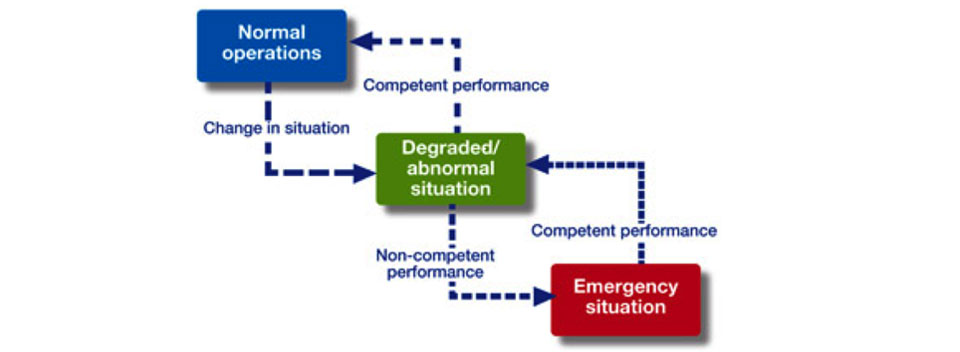

What is ‘simulation’?
‘Simulation’ is often associated with full replicas of real equipment – computer systems, motion systems, and high-quality graphics. This is not the case, as simulation in broadest sense can include:
- Real equipment used in a non-operational training context
- Simple applications such as cardboard mock-ups, classroom exercises, or role-play
- Basic computer-based multi-media graphics and animations
- Desk-top computer-based training and assessment
- High fidelity driving and signalling simulators
We have been using simulation as a key part of our approach to competence management for many years and have developed several unique resources and approaches to assist rail industry organisations, including:
- Risk-based approach for competence management; provides a logical approach to determine when simulation should be used in training and competence assessment.
- Simkit®; our unique tabletop simulation resource for railway operations.
- Training; techniques for trainers and assessors to provide them with the skills and knowledge to design and deliver effective simulation exercises.
Download the SimKit Brochure

Tabletop simulation exercises are a valuable tool for developing and maintaining the competence of staff carrying out safety critical activities. They can be used as a standalone resource or used to supplement other learning methods - including high-technology driving cab simulators.
We have developed Simkit® to provide rail professionals with a simple tool for running tabletop simulation exercises. The kit comes in a robust carry case and contains representations of all the items of railway infrastructure and lineside equipment needed to run simulation exercises for:
- Training and assessment of rules, regulations and operational procedures (for normal, degraded and emergency situations)
- Emergency response
- Post incident review - investigation and re-creation of critical events and decisions
- Testing and validation of rules and procedures
Simkit® allows learners to interact with each other and the materials, providing them with a three-dimensional view of the situation and the opportunity to take decisions and put their knowledge into practice in a safe environment. Using Simkit® encourages learners to think about how as well as what they are learning and to increasingly take responsibility for their own development.

Users of Simkit® have found that it is:
- Effective: Learners are able to test their own knowledge and demonstrate that they can apply this knowledge, providing a more robust method for developing and assessing competence than traditional classroom methods
- Efficient: Speeds up learning and assessment, reducing timescales and increasing depth of competence and confidence
- Flexible: Change and personalise to meet your requirements
- Portable: A self-contained kit that is easy to carry and store
- Fast: Quick to set up and pack away
- Simple: Easy to use and understand
- Fun: The perfect state of mind for learning. Learners can interact and take part in activities around the tabletop scenario.
Develop your skills to manage simulation exercises effectively
Simulation resources - even high-tech solutions - can only be truly effective if trainers have the necessary competence to run the exercise and assess the trainees’ performance.

A controlled simulation exercise follows a distinct, sequential process for design, briefing, delivery, control and debriefing – all managed through adult learning techniques. We have developed a series of training courses to develop learners' skills and knowledge so that they are able to design and manage simulation exercises effectively.
Our training programme comprises a 1-day appreciation for managers and a 2-day programme for those designing and running simulation exercises.
(per person, min of 8 people)
for Assessors & Trainers
(per person, min of 8 people)
A practical workshop style course on how to get the best from the SimKit for training and assessment


